Door latches: types, device and subtleties of installation
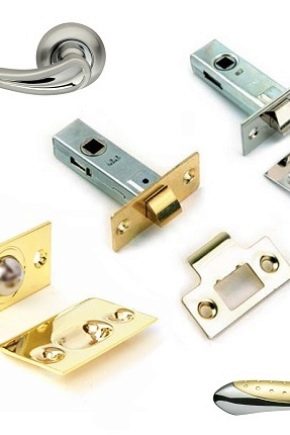
Interior doors have long ceased to be something surprising for many people and have become an integral part of our apartments and houses. Their use makes it possible to clearly delineate the space of several rooms and give each family member the opportunity to protect some territory from the interference of other people.
It should be said that one door is not enough for this. It must be equipped with such a thing called a door latch.
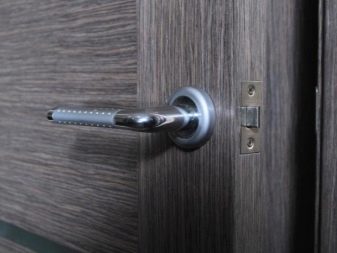
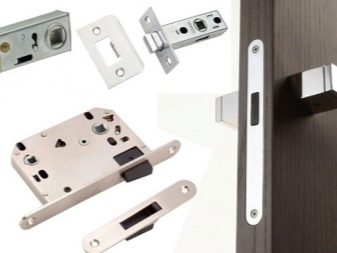
Device
The device of this element is actually very, very simple. And so much so that, most likely, this factor is just the main one when it comes to the fact that it is quite durable. The door handles of this type use a locking method that is widely used in various furniture. The essence here is very simple, and it is worth considering it using an example of one of the methods. Namely, the method mentioned above.
The constructional basis is very simple in this case and consists of two magnets, which should be as powerful as possible. They will be classified as permanent, which is why there is no need to supply electricity or anything else to them. One of these magnetic elements will be located directly in the handle itself in the form of a crossbar, which is fixed in a groove located in the door frame. And the second magnetic element is located in the groove, which is located directly on the loot.


The principle of operation is that if 2 magnets with the correct polarity are placed at a small distance from each other, then they will be attracted. This process will be carried out when the door is closed. When the distance between the magnets is minimal, the magnet in the door frame will attract the lock bolt to itself, then it will not be possible to simply pull or push the door.
To open, you will first need to unlock the mechanism, which can be done either by tilting the handle or turning. This makes it possible to pull back the bolt and disconnect the magnets. When the sash is opened, the magnetic elements will again be at a certain distance, which is why they will not exert any influence on each other. At the same time, the crossbar will not look out or protrude from the lock case, but will be firmly and efficiently fixed inside.
It should be said that recently they began to produce such small magnetic-type latches that they will not be larger than conventional ball solutions.
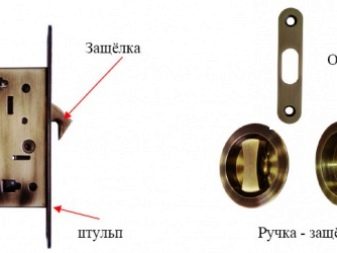
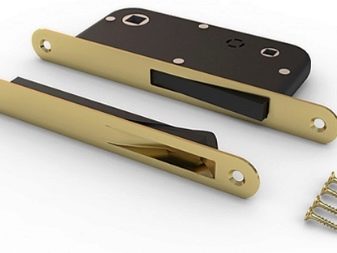
Primary requirements
If we talk about the basic requirements that apply to such an element, then it should be noted that in our time they have become tougher. The reason is that burglars are coming up with more and more ideas on how to bypass such security solutions, despite the fact that this is a simple defense for interior structures, and not for exit doors. If we talk about the basic requirements for such elements, then the following should be mentioned:
- the operation of the mechanism when opening and closing the structure should be noiseless due to the fact that a constant, rather loud clicking sound will not be an indicator of an increase in comfort in the house;
- the plumbing or any other latch should work smoothly, since if it just jams at some point, you can be blocked in the room;
- reliable fixation of the door when it is in the closed position, because no one wants the door to open by itself and at the same time, so that someone would violate a person's personal space in various situations.
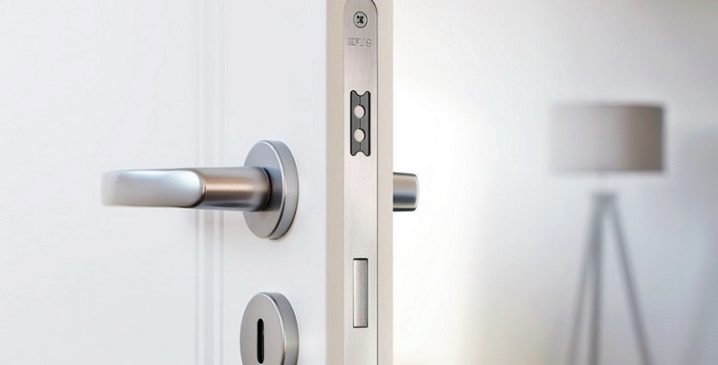
Varieties
Now it's worth talking about the types of latches in question. It should be noted that their installation is carried out only on swing doors, but for sliding solutions, another type of hardware is produced. Door latches can be of the following varieties:
- sliding - such solutions are both a latch and a lock-type crossbar at the same time;
- magnetic - they can hold the door closed without closing it;
- electronic and electromechanical - such solutions can be controlled remotely using cards or programmed keys;
- roller - they are equipped with spring-loaded rollers that rotate;
- fale - such solutions have an oblique spring tongue.
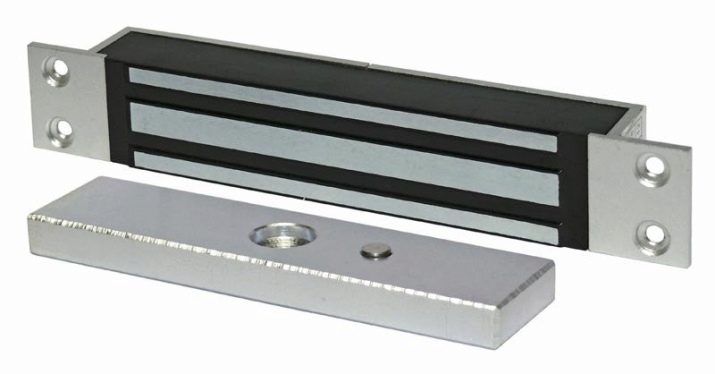
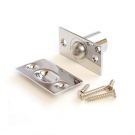
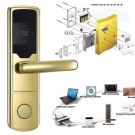
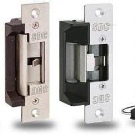
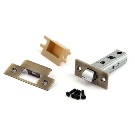

You should consider in more detail each type of latches. In order to close the door with a latch-type latch, some effort should be made, where the beveled tongue should slide along the counter plate and, after snapping into place, the door leaf will lock. If such a mechanism is installed correctly, then you can open the door only after clicking on the handle or turning the key. The handles can be mounted on one or both sides. Such a mortise rotary latch can get two locks: one will open thanks to the handle, and the second will work as a latch. The handle of such mechanisms not only fulfills its function, but also decorates the door.
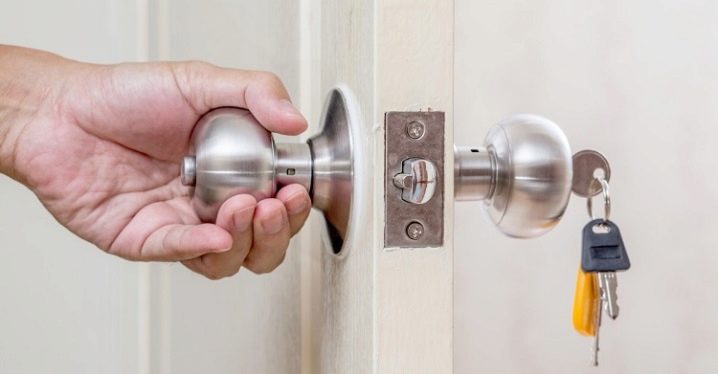
If we are talking about a roller type, then here in the role of a bolt there will be either a tongue beveled on both sides, or a special roller that rotates. Such a latch can be both on the frame and on the door leaf. When it slams, the spring-loaded roller enters the hole on the opposite strip and fixes the sash in the closed position. Such a latch can be mounted on the door frame and on the door leaf itself.
When the door is closed, the spring-loaded roller is in the hole located on the counter plate, and allows the sash to be fixed in the closed position. By the way, this type of latches can be mounted as a separate device on both swing and swing doors. It has nothing to do with other details on the lock. It is not possible to completely close the door with such a latch, since if you press on the door, it will open.
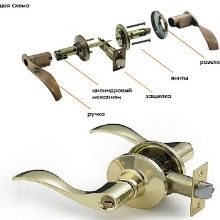
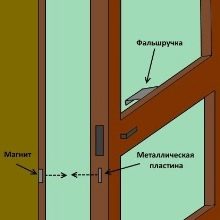
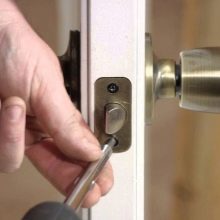
The magnetic latch works like a magnet that attracts metal parts. Typically, these quiet solutions are used in both office and residential premises. This option allows the sash to be fixed in the closed position, and in order to open it, a certain force must be applied. The first part will be installed on the canvas end, and the second on the door frame. When the door is closed, the magnet is pulled up to the counter bar, made of metal, and the sheet fixes the door in the closed position.
Another type to be mentioned is the slide latch. Here will be presented not only the latch, but also the lock. Such solutions are made without handles, so they can be opened exclusively from the inside either with a turntable or with a key.
Almost all such solutions are equipped with a retainer, which, if necessary, makes it possible to hide the spring bolt in the latch body. When it is hidden and locked, there is no need to worry that the mechanism will close spontaneously.
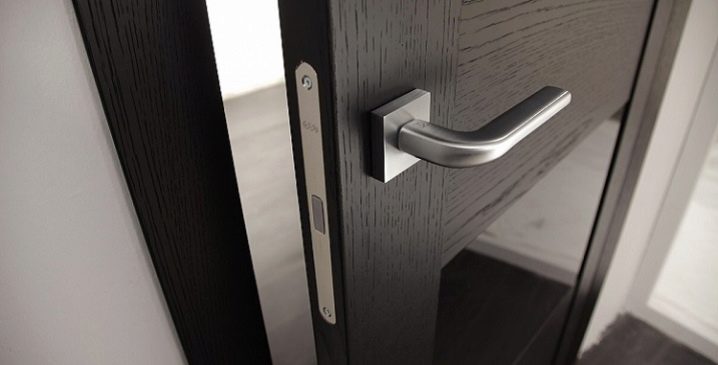
An electric or electronic latch makes it possible to remotely control doors, which is why they are usually mounted on gates, as well as at the entrance to some rooms that are guarded. It should be said that such latches require an autonomous power supply.The reason for this is that in the absence of electricity, the latch will be in an open state. By the way, it is worth noting that the electric latch also has a mechanical part.
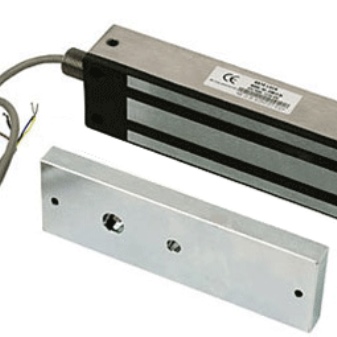
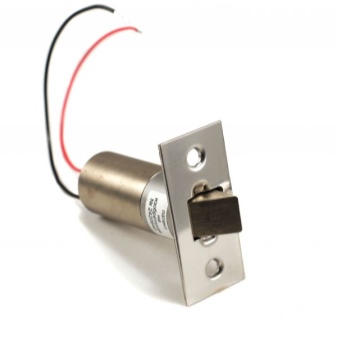
In general, this category of latches is divided into several types.
- Normally open. When the power is turned off, the latch moves to the open position. As a rule, such solutions are installed on emergency exits and entrance doors.
- Normally closed. If there is no electricity, then such a latch goes into the closed position, which makes it possible to make the room safe if there is no power. You can open such a latch using a handle from the inside and a key from the outside.
- With the possibility of arresting. When current is applied, the latch is unlocked and remains in position until the door has been opened at least once. When the tongue enters the body, it is fixed in this position by special pins that hold it until someone uses the door.
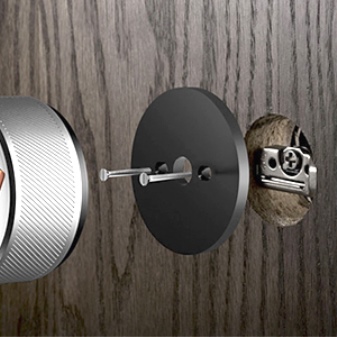
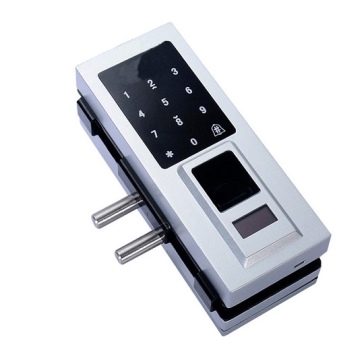
How to choose?
The door ball latch is a versatile latching solution that fits all doors: plastic, frame, glass, aluminum, wood and metal. But such a mechanism can also be used for sliding or pendulum ones. But if we talk about the purpose of the doors, then there are no restrictions at all. Moreover, almost any latches can easily coexist with locks. In general, convenience and practicality.
As an example, it can be said that when mounted on a door to a nursery, a child will be able to easily enter or exit it on their own. At the same time, the other types of latches mentioned above may require turning the door handle, it will simply be difficult for a child to do this and get where it needs to be.
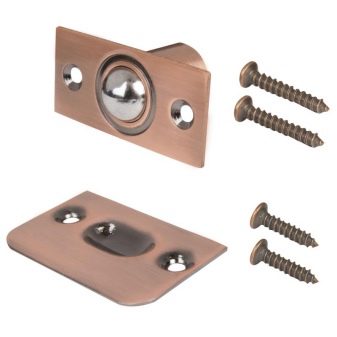
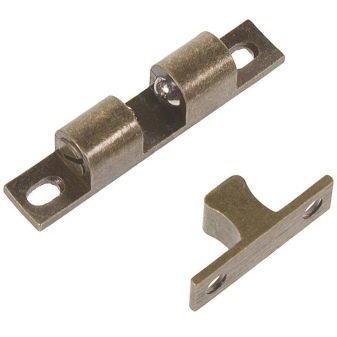
But still, a choice should be made depending on which door and where it leads. For example, for the front door, it is better not to neglect the latch and select the most reliable option. And for a bath or toilet door, you can use magnetic, sliding or roller latches.
The advantage of such clamps, in addition to the fact that they are simple to use, will also be that they are easy to operate and maintain, and they are also reliable and have a fairly low cost. The only significant drawback of a number of models can only be called the fact that various options emit rather loud clicks, which may not please everyone. Although this is where their disadvantages end. By the way, such solutions for the toilet will be the best option.
In addition, a lot will depend on the latch manufacturer. For this reason, it is better not to save money and purchase products exclusively from well-known brands that have long established themselves on the market.

DIY installation
It is worth considering how to directly install the lock and the handle to it in a PVC door or any other. If a person has at least basic skills in carrying out carpentry work, then he will not have any problems with installing the latch. To implement it, you should have the following set of tools at hand:
- electric drill;
- sets of screwdrivers and drills;
- hammer and screwdriver;
- knife;
- milling cutter with a chisel;
- ruler, corner.

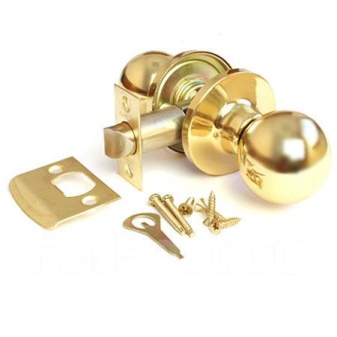
To install the latch yourself, the process must be broken down into several building blocks.
- Choice of mounting location in height. To conveniently use the door latch as part of the installed lock mechanism, they should be set at a level of 85 to 105 centimeters. But here everything will depend on the people living in the building.
- Marking the door. At the desired height, it is noted where the latch will be located, after which it will be attached to the door end and outlined with a pencil. If a handle is present, then the door is also required to be outlined on the other side, so that the mechanism is not installed crookedly.
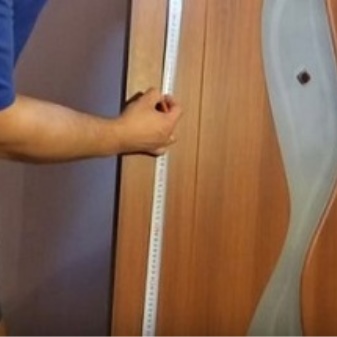
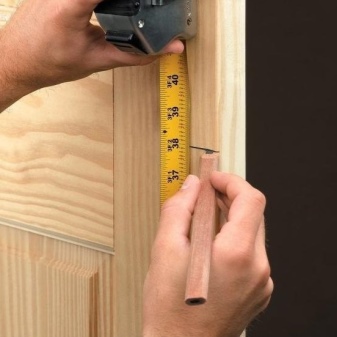
- Creation and preparation of holes. When the contours of the future holes have been marked, using a drill, it is necessary to drill a hole of a certain depth, which will depend on the latch model chosen by the person. When this has been done, you need to take a hammer and chisel to align the resulting hole. Now you need to make the attachment for the handle. If you have a router at hand, this stage can be completed faster. To avoid any chips in the hole for the handle, they drill on both sides of the door leaf so that the drill fits into about half the thickness of the door leaf.
- The next step is to make room for the latch bar. First, you should check if the mechanism fits into the hole that was made. If this is not the case, then the hole is expanded using the already mentioned chisel and hammer, after which the latch is inserted into the prepared hole and outlined with its lining using a pencil. Now the device is pulled out and a small indentation is made so that the latch bar is flush with the door end.

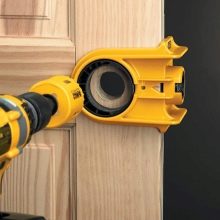
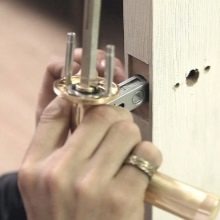
- Now you can proceed directly to the installation of the latch. It is mounted in a prepared hole, after which it is fixed using self-tapping screws. To make them easier to twist and their heads do not lick off, experts recommend making holes for them with a thin drill. If the latch is equipped with a handle, then you can install a square pin, then put on the handles and fix them. And after that, it remains to make decorative overlays.
- It remains to make the installation of the counterpart. To accurately set the place on the door frame for the counter-type bar, grease the tongue with toothpaste, and then close the door. There will be a trace on the frame, to which the counterpart will be attached and the place of its fastening is marked. Using a chisel and a hammer, you need to make a depression for the tongue on the frame, and then fix the striker.
And it is also worth considering how the installation of the overhead latch is carried out. First, the installation locations of the latch and for self-tapping screws are marked on the door leaf. Now the locking type mechanism is twisted into place, which was previously prepared.
Opposite the latch that was installed on the door frame, you need to screw the counterpart. By the way, it will not be superfluous to drill holes for self-tapping screws in advance.
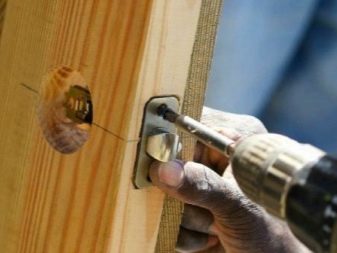

Repair
It often happens that the door latch broke or stopped working as needed, which made it necessary to disassemble it. This is usually necessary in the following cases:
- during operation, a creak is heard or the mechanism jams;
- lubricate the mechanism and clean the obturator;
- replace broken parts;
- it is necessary to replace the latch.

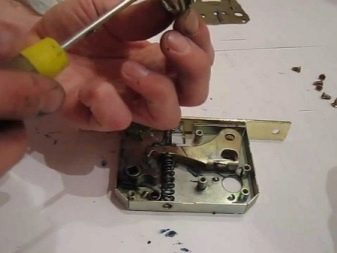
The sequence of work may vary depending on the category of the installed latch, but approximately it will be as follows:
- you need to dismantle decorative-type pads for handles, which can be done by unscrewing the mounting screw;
- now the handles are dismantled by unscrewing the screws that fix the handles, then they are removed and the square pin is pulled out;
- you need to pull out the latch mechanism - to do this, unscrew the fasteners that are located on the canvas end, after which you can pull the latch out of the canvas;
- at the last stage, you need to remove the last fastener and pull out the latch.
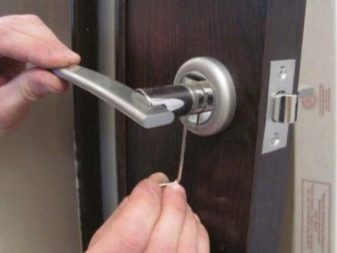

After that, it is necessary to establish the reasons that led to the malfunction, namely:
- if the creak and problems are the result of a lack of lubrication or contamination of the mechanism, then all this is cleaned;
- if rust appears, then it must be removed, after which the metal elements must be treated with a solution with anti-corrosion characteristics;
- if the tongue or spring breaks, then the part should be replaced;
- if the mechanism is completely worn out, then it is necessary to install a new latch.
In the next video, you will find a door latch repair.













The comment was sent successfully.